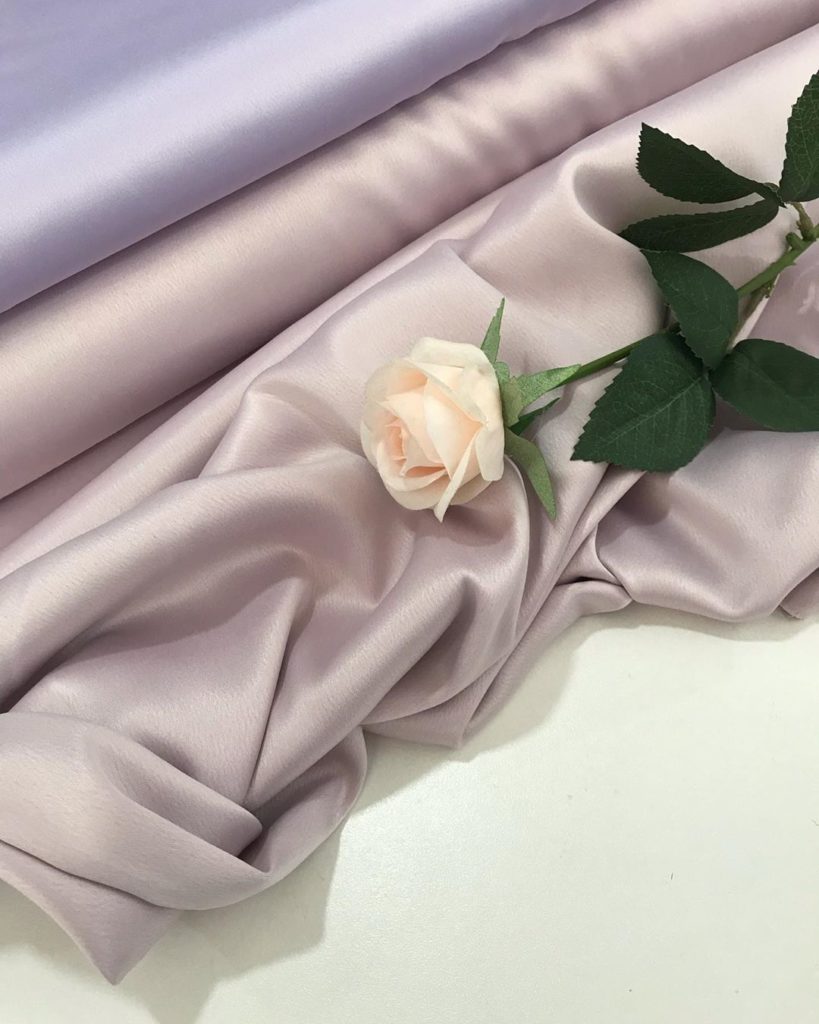Pleasant to the touch and shiny, satin is a wonderful fabric that is particularly dense and durable. Things made from it, when properly used, do not lose their pristine beauty and freshness for a long time.

@tkani7kmukraina
The word “atlas” is Arabic and means “smooth”. It is this quality of fabric that has been valued since ancient times: then outfits for the richest people were made from it.
This material is a “close relative” of silk, it appeared thanks to the Chinese. 2000 years ago they came up with a special technology for weaving silk threads, which produced a strong but smooth fabric. This production was expensive and labor-intensive, and therefore satin dresses were worn exclusively by representatives of the privileged classes.
For a long time, this fabric was elite, until the moment when people discovered synthetic materials. People quickly learned to dilute silk threads with artificial fibers, thanks to which the production of satin became less expensive, and many inhabitants of the planet could afford products made from it.

@ing_tkani
The main feature of the atlas is its smoothness. A similar effect is created with the help of a special interweaving of warp and weft threads: the first overlap the second, which is why the front side of the fabric is smooth and shiny, and the back side is slightly rough and matte.
However, modern manufacturers are not limited to this type of weaving. To obtain a smooth surface on both sides, the warp threads also overlap the weft threads on the reverse side. This process is more expensive, and therefore the finished fabric will be more expensive.
Nowadays it is difficult to find an atlas in its pure form. Completely natural, it costs fabulous money, although it is quite justified. Cheaper materials always contain synthetic components. They do not affect the fabric in the best way: the material can stretch, quickly fade and collect dust. However, its cost does its job - satin with artificial additives is much more common today than completely natural ones.
Satin is a great material. It is highly breathable, completely opaque, hygroscopic, dries quickly and is easy to clean. In addition, made only from silk, it practically does not electrify and does not cause allergic reactions.

@tkanimax
However, this fabric also has some disadvantages. So, with active wear, a product made from it will wrinkle (for example, the sleeves of a blouse or trouser legs in the fold area will lose their original ironed appearance during the working day). The fabric can shrink if washed in hot water, and the cut frays a lot, so when sewing any product, the edges must be processed using an overlocker. In addition, puffs are the real problem with this luxurious material.You need to use a satin product as carefully as possible, since it is almost impossible to remove any, even small, hook.
Atlas can be different, the main differences are in the texture and type of pattern. Thus, according to the first criterion, the following types are distinguished:

@wholesalefabric_
The pattern also varies. Most often this is a printed pattern, embroidery, jacquard or thermal embossing. Each of these options is good and interesting in its own way.